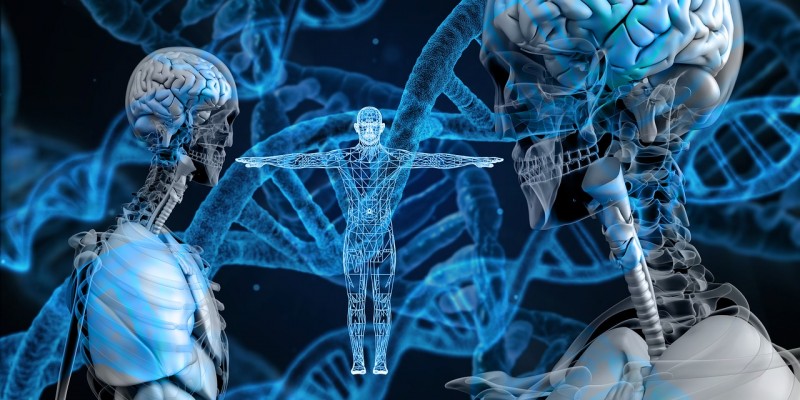
In the world of genetics and molecular biology, the intricate process of protein synthesis is a central player. Understanding how DNA codes for proteins is fundamental to comprehending the workings of life itself. This article delves into the fascinating world of the genetic code and protein synthesis, providing insights into the complex mechanisms that underpin the creation of proteins.
The Basics of DNA and Genes
Before exploring protein synthesis, let's first grasp the basics of DNA and genes. DNA, or deoxyribonucleic acid, is a double-stranded molecule that carries genetic information in all living organisms. Genes are segments of DNA that contain the instructions for building specific proteins.
Transcription: From DNA to RNA
Transcription is the first step in protein synthesis, where genetic information encoded in DNA is transcribed into RNA. The process involves three main stages: initiation, elongation, and termination.
Initiation
During initiation, RNA polymerase binds to the promoter region of a gene, marking the starting point for transcription.
Elongation
Elongation is the phase where RNA polymerase adds nucleotides to the growing RNA strand, following the DNA template.
Termination
The termination stage halts transcription when RNA polymerase reaches a specific termination sequence.
RNA Processing
After transcription, the newly synthesized RNA undergoes several modifications before becoming a mature mRNA molecule.
Capping
The addition of a 5' cap at the beginning of the mRNA protects it from degradation and assists in ribosome binding.
Splicing
Introns, non-coding regions in the RNA, are removed through splicing, leaving only exons, which are coding sequences.
Polyadenylation
The addition of a poly(A) tail at the 3' end of the mRNA stabilizes it and aids in the export from the nucleus.
Translation: From RNA to Proteins
Translation is the second critical step in protein synthesis, where the mRNA is translated into a polypeptide chain.
Ribosomes and tRNA
Ribosomes, the molecular machines, read the mRNA and facilitate the binding of transfer RNA (tRNA) carrying specific amino acids.
Initiation of Translation
The process starts with the recognition of the start codon AUG by the initiator tRNA.
Elongation of the Polypeptide Chain
A chain of amino acids is formed as the ribosome moves along the mRNA, reading the codons and adding corresponding amino acids.
Termination of Translation
Translation concludes when the ribosome encounters a stop codon, and the polypeptide chain is released.
The Role of Codons in Protein Synthesis
Codons, a sequence of three nucleotides in mRNA, serve as the code for specific amino acids during translation.
Codon-anticodon Interaction
The anticodon of tRNA pairs with the complementary codon in mRNA, ensuring the correct amino acid is incorporated.
Start Codon and Stop Codons
The start codon (AUG) initiates translation, while stop codons (UAA, UAG, and UGA) signal the end of translation.
The Genetic Code: A Universal Language
The genetic code is nearly universal, meaning the same codons code for the same amino acids across different organisms.
Gene Regulation and Protein Synthesis
Regulating gene expression is crucial for cell function, and it occurs at various stages during protein synthesis.
Transcriptional Regulation
Transcription factors control the rate of transcription by binding to specific DNA sequences.
Post-transcriptional Regulation
MicroRNAs and other factors influence mRNA stability and translation efficiency.
Translational Regulation
Initiation factors and regulatory proteins modulate translation rates.
Post-translational Regulation
After translation, proteins may undergo modifications that affect their activity and function.
Errors in Protein Synthesis
Occasionally, errors occur during protein synthesis, which can have significant consequences.
Mutations and Their Impact
Mutations can lead to genetic disorders or, in some cases, beneficial adaptations.
Quality Control Mechanisms
Cells employ various quality control mechanisms to detect and degrade faulty proteins.
Applications in Biotechnology and Medicine
Understanding protein synthesis has revolutionized biotechnology and medicine.
Genetic Engineering
Researchers can manipulate DNA to produce desired proteins or modify organisms for specific purposes.
Therapeutic Approaches
Advancements in protein synthesis have paved the way for targeted therapies and gene-based treatments.
The Future of Protein Synthesis Research
As technology and knowledge advance, the study of protein synthesis continues to hold immense promise for scientific breakthroughs.
The intricate dance between DNA, RNA, and ribosomes orchestrates the marvel of protein synthesis. This fundamental process is essential for life, and its understanding is crucial for various scientific disciplines. From gene regulation to biotechnology applications, protein synthesis has shaped our understanding of biology and empowered us to harness its potential for improving human health.
Get a diabetes test done immediately If these symptoms are seen in the feet
Are you compelled in front of sugar? So adopt these habits to reduce sugar cravings
Breathing Easy: Discovering the Top 10 Superfoods for Healthy Lungs